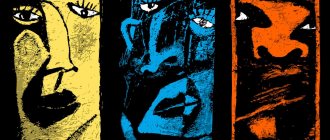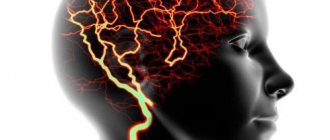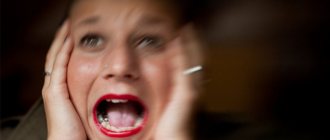Share with friends
Bipolar disorder is increasingly seen in films, books and in culture at large. For example, the TV series “Shameless” gave us the word “Bipolar.” If you've noticed mood swings and are starting to worry whether it's bipolar, try taking these questionnaires, they will help you better determine whether there is a reason to see a doctor. Remember that the diagnosis is still made by a psychiatrist. Bipolar affective disorder is a complex disease, and even an experienced doctor will rarely make a diagnosis right away.
We've put together a series of tests to help you determine whether you have symptoms of bipolar disorder or not.
Test for bipolar affective disorder and hypomania
Bipolar disorder differs from depression and other disorders in that with bipolar disorder there are periods of elevated mood, so determining whether you have had such episodes is very important for diagnosis. Hypomania test HCL-32 is a validated Russian version for identifying the possible presence of bipolar disorder.
Used to identify type 2 bipolar disorder among patients with recurrent depressive disorder. The test describes the symptoms of hypomania. Take the online test
Symptoms of the manic phase
Symptoms and signs of the manic phase in patients are expressed by the “manic triad”:
- Increased mood.
- Acceleration of thinking.
- Psychomotor agitation.
Manic episode
Patients experience optimism, a euphoric mood, high self-esteem, and a desire to show off and stand out. Overvalued ideas may develop, for example, to invent a perpetual motion machine, or delusions of grandeur combined with incoherent thinking, instability of attention and rapid speech. Along with increased activity, desires will intensify:
- increased appetite;
- desire to communicate;
- the desire to impose, to help;
- altruism;
- willingness to take on all possible tasks;
- hypersexuality;
- attraction to alcohol or drugs, wastefulness.
The manic phase is accompanied by symptoms of a sleep disorder that does not cause fatigue. Patients are able to go without sleep for a long time or sleep a small number of hours a day.
A person in a manic phase usually does not realize that something is wrong with him, but, on the contrary, is even happy about his condition. Some creative individuals consider this state to be a special inspiration and try to hide it from other people.
There are several degrees or stages of the manic phase according to the depth of the patient’s immersion into it.
Stages of the manic phase
Hypomanic stage
Mild degree of mania. A person’s mood improves, somewhat stronger than usual, and lasts longer than 4 days. The need for sleep, attentiveness, and perseverance decrease. Motor activity, talkativeness, libido, and recklessness increase. At the same time, social interaction is not disturbed, there are no delusions or hallucinations. The person is aware of his hypomanic state, but he likes it.
Moderate mania
Mania without psychotic symptoms lasts 7 days or more. All of the above symptoms increase. Insomnia occurs. Euphoria gives way to aggression. Attention is not maintained. The patient loses social interaction.
Mania with psychotic symptoms
All symptoms develop into uncontrollable psychomotor agitation, accompanied by violence and rage. Incoherent thinking is complemented by delusions of grandeur or persecution, and hallucinations are noted.
Cyclothymia test
Cyclothymia is a relatively “mild” form of bipolar disorder.
The symptoms of this disease are very similar to manic-depressive psychosis, but are much less pronounced, so they first attract attention. Go to test
Read about what bipolar disorder is and the severity of depression.
Factors provoking the development of manic-depressive psychosis
Psychosis develops in patients with problems in the hypothalamus, namely: there is no exchange of nerve impulses between the areas responsible for the emotional and mental life of the body, resulting in a deficiency of neurotransmitters.
Factors that influence the disease of manic depression:
- heredity;
- receiving a skull injury or undergoing surgery on the brain;
- meningitis or encephalitis;
- constant presence in neuropsychic tension;
- exhaustion of the systems that are responsible for the functioning of the brain.
Beck Depression Inventory
The Beck Depression Inventory was developed by him in 1961 and is still one of the most relevant scales for determining depression.
The questions are based on the most common symptoms and complaints among patients.
Take the test
Only a psychiatrist or psychotherapist can make a diagnosis and prescribe treatment, and of course, no questionnaires can replace it. The psychiatrist looks at you, how you speak, how you behave, nothing can replace a face-to-face meeting. But tests can strengthen your desire to go to the doctor, because deciding to go to one can be difficult.
There are mental illnesses that have some (or many) symptoms similar to bipolar affective disorder. Psychiatrists sometimes make mistakes in diagnosis, failing to distinguish one from the other. Below we provide tests for diseases that are most often confused with bipolar disorder. Please note that there are times when one person has both bipolar disorder and another mental disorder, such as borderline personality disorder.
Borderline Personality Disorder Test
Bipolar disorder can be confused with borderline personality disorder. The two disorders have similar symptoms. Borderline personality disorder is also characterized by mood swings, an unstable connection with reality, high anxiety and a strong level of desocialization.
Take the test
What causes bipolar disorder?
In simple terms, a person suffering from bipolar disorder is unable to control his mood. Wonderful, quite often inappropriate emotional upsurges (affective manic states) alternate with causeless energy declines, and a feeling of all-consuming euphoria is replaced by melancholy, fatigue, loss of interest in life (depression).
The phases will be able to appear alternately, and may be interrupted by a bright period of mental health (interphases). If the interphase drags on for a couple of years, the patient may completely forget about his illness, but it will be all the more difficult for him to accept the fact of its relapse.
Bipolar disorder is like a lottery: a person under no circumstances has the opportunity to guess when it will show itself again, in what order the phases will occur, and how long it will last. On average, their duration ranges from several weeks to 2 years, and depressive phases are three times longer than manic phases.
BD is much more often interpreted as a genetic predisposition, despite the fact that the principle of inheritance is not fully understood. Studies of twins speak in favor of the genetic theory: if one of them is diagnosed with bipolar disorder, the second with a 40-70% chance will also get sick.
In addition, scientists are considering the possibility of disturbances in the metabolism of the hormones serotonin and norepinephrine. The endocrine theory is confirmed by the fact that in women, affective disorders often worsen during hormonal surges (menstruation, pregnancy, after childbirth, during menopause).
Review
Previously called bipolar disorder, manic depressive disorder is a brain disorder that causes extreme highs and low moods. These fluctuations can affect your ability to perform daily tasks.
Bipolar disorder is a long-term condition usually diagnosed in late adolescence or early adulthood. Than 10 million American adults and children will experience bipolar disorder at some point in their lives. Experts aren't sure what exactly causes bipolar disorder. Family history may increase your risk.
It is important to see your doctor if you think you may be experiencing symptoms of bipolar disorder. This will help you get an accurate diagnosis and treatment approval.
Read on to learn how doctors and mental health professionals diagnose this disorder.
How does bipolar disorder manifest?
The number of phases of depression and mania varies among patients. Some experience only one affective episode during their lifetime, while others experience dozens. The average duration of one phase is several months (3-7). Episodes of mania occur less frequently and their duration is three times shorter than depressive periods. Clinical signs of bipolar disorder depend on the phase the patient is in and the severity of the disease.
Manic phase
It is represented by a triad of main symptoms: motor agitation, elevated mood (hyperthymia), accelerated thought processes (tachypsychia). Manic-depressive syndrome in the manic phase has three degrees of severity:
- Mild (hypomania). The patient has an elevated mood, increased social activity, and increased mental and physical performance. The patient becomes talkative, energetic, and active. His need for sleep and rest decreases, and sexual desire increases. Sometimes there is irritability and hostility. The average duration of an episode is 5-7 days.
- Moderate. Mental and physical activity increases significantly, and the need for sleep completely disappears. The patient cannot concentrate and is constantly distracted. Social contacts become difficult and the ability to work is lost. The episode lasts less than a week.
- Heavy. Mania occurs with psychotic symptoms: severe psychomotor agitation, a tendency to violence. The patient experiences racing thoughts, the connection between facts is lost, and hallucinations develop. The patient develops delusions, ideas of grandeur arise, and the ability to work and self-care skills are completely lost. The severe form lasts several weeks.
Variants of the course of the depressive phase
The opposite pole of bipolar disorder is characterized by other symptoms - slow thinking (bradypsychia), depressed mood (hypotymia), and motor retardation. Bipolar personality disorder in the depressive phase can occur in four stages:
- Initial. It manifests itself as a weakening of general mental tone, physical and mental performance.
- Growing. It is characterized by a strong decrease in mood, anxiety, motor retardation, and frustration appear. The patient's speech is quiet and slow. Difficulty falling asleep turns into prolonged insomnia, and there is no appetite. Performance decreases sharply.
- Expressed. Symptoms reach their maximum development. There is causeless anxiety, restlessness and melancholy. Patients sit or lie in one position for a long time (depressive stupor). Many develop anorexia and experience suicidal thoughts and actions. Patients are characterized by delusional ideas of their own sinfulness and self-abasement. Hallucinations appear in the form of voices calling for suicide.
- Reactive. Characterized by the return of symptoms. The patient still has asthenia, but there is increased motor activity and talkativeness.
Rapid cycling bipolar disorder
It is diagnosed in almost all patients with bipolar disorder. A rapid change of polar phases occurs over 4 months. Sometimes there are more than 4 episodes of depression, mania and mixed states during the year. Rapid cycling bipolar psychosis has a poor prognosis and is difficult to treat.










